National Breath of Life Archival Institute for Indigenous Languages wins international award for helping tribes keep their languages alive
For communities with few to no first language speakers, archival-based work has become vital
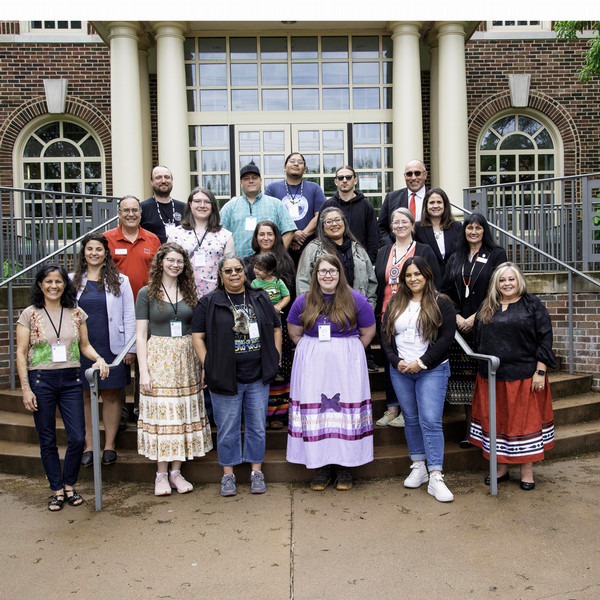
National Breath of Life Archival Institute for Indigenous Languages wins international award for helping tribes keep their languages alive
Bo Johnson from the Confederated Tribes of Siletz in Oregon wanted to know the meaning of the Siletz prayers he heard spoken during ceremonies.
Kate Pewenofkit Briner gets stopped on the street in Lawton, Oklahoma, by people wanting to thank her for the dictionary she has been creating for the Comanche people.
“I go to the dictionary every day to hear my grandma's voice,” one person told her.
And Shawnee Tribe citizen Terry Hinsley said they offer classes in Miami, Oklahoma, for “our languages to get back into the mouths of our people all across the country.”
All three share a common goal: As apprentices with the National Breath of Life Archival Institute for Indigenous Languages, they are trying to keep their Indigenous languages alive for future generations.
The Association of Tribal Archives, Libraries & Museums, an international nonprofit, honored National Breath of Life on Nov. 13 during its international conference in Palm Springs, California. The institute was awarded the 2024 International Guardians of Culture and Lifeways Language Program - Institutional Excellence Award.
Daryl Baldwin, co-director of National Breath of Life — based in the Myaamia Center at Miami University — said, "We recognize the significant value of all our partners and especially the tribal communities and dedicated language warriors, many of whom have dedicated their entire careers and lives to breathe new life into their languages."
"This award belongs to all of our stakeholders who have supported archive-based language revitalization efforts and engaged in this work in order to keep our languages part of our lives and futures as first Americans."
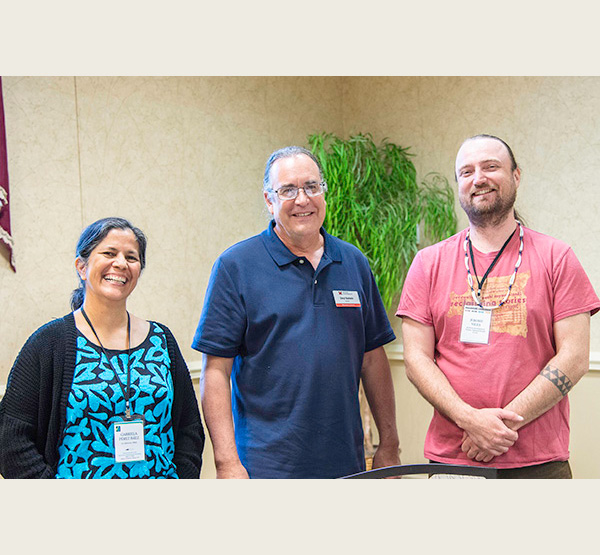
A race against time
Since 2011, National Breath of Life has held workshops to provide training and support to language revitalization practitioners representing more than 63 Indigenous languages in North America.
In March 2022, the institute launched the apprenticeship program with the support from the National Endowment of the Humanities and the Andrew W. Mellon Foundation to work directly with 13 citizens from 10 participating Indigenous communities in California, Oregon, Wisconsin, and Oklahoma.
“This is mostly for communities whose languages have reached the point of dormancy or near dormancy,” said Gabriela Pérez-Báez, an associate professor of linguistics at the University of Oregon and co-director of National Breath of Life.
For many tribes, it is a race against time.
Baldwin, a citizen of the Miami Tribe of Oklahoma, knows that all too well. He is executive director of the Myaamia Center, which has been at the forefront of a language and cultural revitalization with the Miami Tribe that has resulted in the first generation in about 100 years learning to speak the Myaamia language.
A key component has been the Myaamia Center’s Indigenous Languages Digital Archive (ILDA), a web-based software designed to assemble primary source materials of endangered languages into a digital archiving space to facilitate linguistic analysis and development of language learning materials.
For communities with few to no first language speakers, archival-based work becomes especially vital.
Pewenofkit Briner is grateful for the opportunity to be an apprentice. During a visit to Miami earlier this year, she mentioned the four Rs in the Comanche culture — reciprocity, relationships, redistribution, and respect.
"The highlight for me is to see the Myaamia people embody that in what they do," she said, "and it's a standard that I now have for what I want to see in my community."
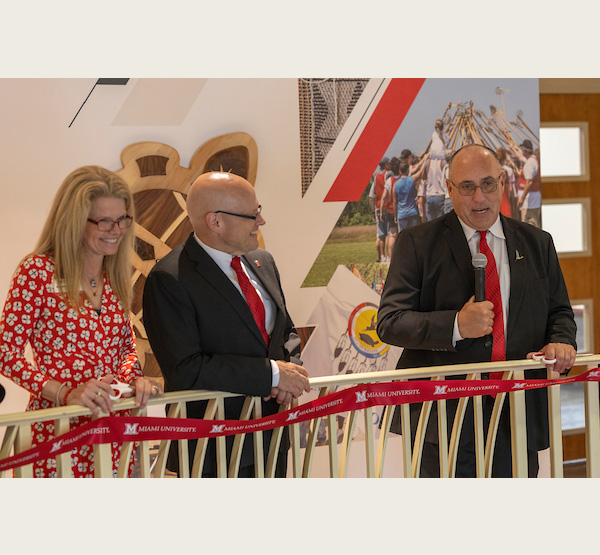
‘Growing the forest’
National Breath of Life officials liken the language revitalization process to basket weaving — gathering materials, processing them, then weaving them into their community.
“Everyone comes into this work at very different places in that process,” archive development trainer Jerome Viles said.
“They all have been working on some aspect of building a digital archive using ILDA or building a dictionary or doing really hardcore transcription projects of their archival materials.”
Viles works closely with the apprentices, providing training and support. Pérez-Báez said they talk a lot about “growing the forest” in this broad Indigenous community.
“It’s really amazing to think that in North America, most Indigenous communities are undergoing revitalization and have been for quite some time from within the community,” she said. “We all support each other.”
She appreciates how the Miami Tribe of Oklahoma and the Myaamia Center have shared the ILDA tools they developed initially for the Miami Tribe’s use.
Miami Tribe of Oklahoma Chief Douglas Lankford said they wanted others to have the opportunity to use what has worked for his Tribe.
“The impact on our Nation has just been astounding,” Lankford said. “Through all that work, our games have returned. Our dancing has returned. Storytelling has returned. All of these things have returned to our Nation through all of this work.”
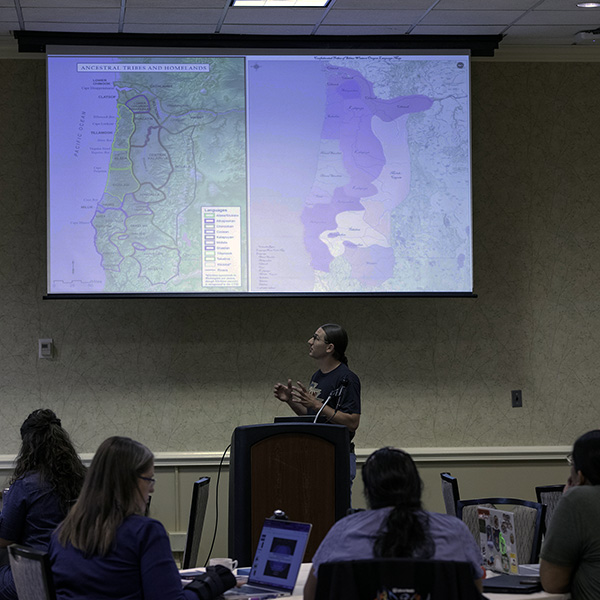
Seeing the impact in other communities
The first time Johnson took part in Siletz dances, it was such a strong experience for him.
“I wanted to know what those prayers were talking about — not just know how to translate them but why they are being said and the deeper meaning.”
Johnson has been learning his language, slowly picking up words and phrases that he can say and understand.
During the pandemic, they didn’t dance for two to three years. By the time the dancing resumed, Johnson’s work had paid off: He was able to understand more of the prayers.
“That was big for me.”
Hinsley said National Breath of Life is helping the Shawnee community create an online database accessible to all of their students and citizens.
“It’s really crucial in supporting the work we are doing,” he said of their program that is open to all three tribes — The Shawnee, Eastern Shawnee, and Absentee Shawnee.
For Hinsley, the primary part of the apprenticeship focuses on dictionary creation. “We have done quite a bit of work building archives, so a lot of our material has been transcribed and put in the ILDA archive database.”
He has spent hours taking the curriculum from classes and using that to add vocabulary words to the online dictionary.
Pérez-Báez said they learn from each other when they share what they are doing, including talking about the challenges they face.
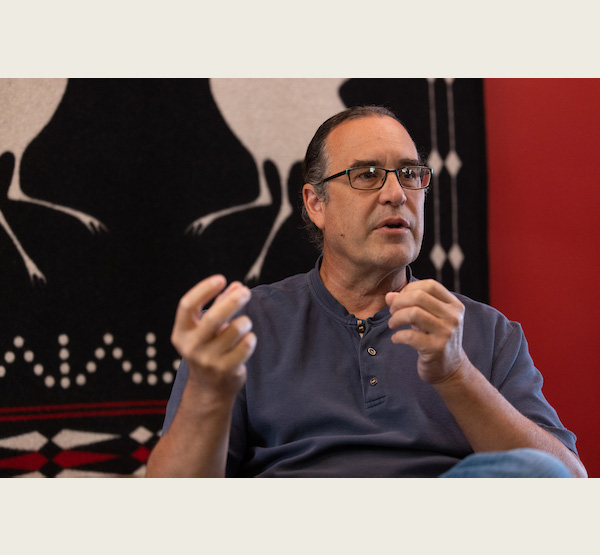
‘It was just something we had to do’
Baldwin is glad the Myaamia Center gave National Breath of Life a much-needed home so it would continue to develop and thrive with the aid of funders.
“I think they saw it as having viability,” he said, “but because it didn’t have an institutional home, there were really no resources to support it and advance it.”
At the time, Baldwin was a bit nervous about the decision because the Miami Tribe was going through some growing pains.
“We had a lot of challenges responding to our own growth and community needs, so I came back and visited with the staff I had at the time. I said, ‘Should we take this on? This is going to be a pretty monumental task.’”
The staff collectively answered yes.
He visited with Miami Tribe leaders, who had the same response as his staff.
“There wasn’t really any hesitation. It was just something we had to do because we saw where things were going.”
They all knew how important archival materials would become to the vast majority of Indigenous communities and needed to start building infrastructure on how to use archival materials and artifacts.
The key lay in digital — something they could offer because of the 50-plus year relationship between Miami University and the Tribe. Students in Miami's College of Engineering and Computing collaborated with the Myaamia Center to develop digital archives.
Baldwin realized many Indigenous communities don’t have the resources to invest in “the kind of technology that we are able to do here because of the partnership between the Tribe and university.”
After working to advance National Breath of Life, he believes things will look differently 10 years from now. There are a lot of directions to grow the effort, which can impact the work they are putting into reclaiming their languages.
While he said that’s exciting, Baldwin remains cautious.
“The challenge for us in Indian country is to make sure we are protecting that data,” he said, calling for a need to balance progress in this area while protecting the integrity.
“We see the best way to advance it is with you all," he told the apprentices, "and on our own terms as individuals invested in the revitalization of our languages.”